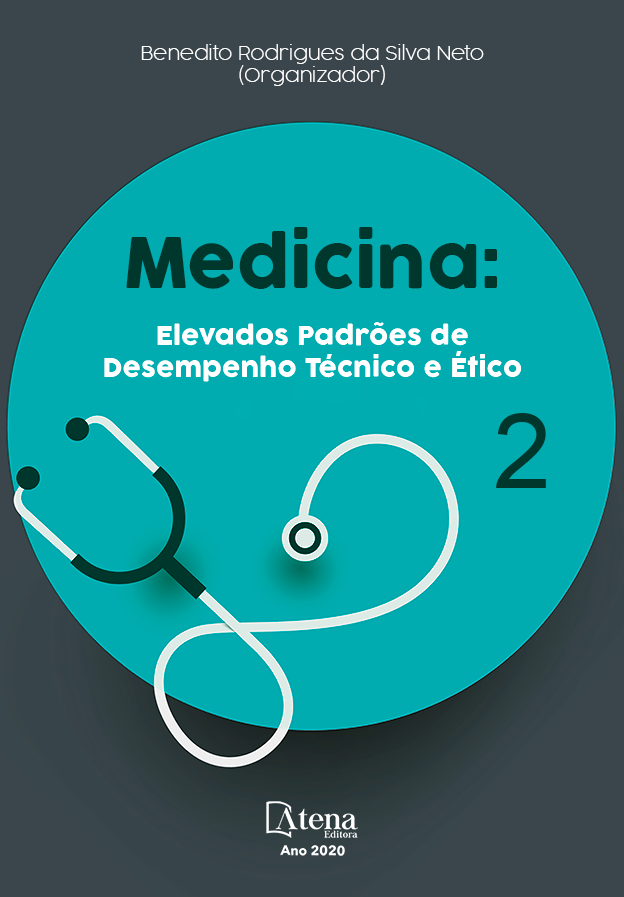
TRANSPLANTE HEPÁTICO EM PACIENTE COM FEBRE HEMORRÁGICA: UM RELATO DE CASO
Introdução: A febre amarela é uma febre hemorrágica viral com alta taxa de letalidade. Dentre as complicações estão: disfunção hepática, falência renal, coagulopatia e choque. Nesse sentido, a doença tem alta importância epidemiológica por sua gravidade clínica e por seu elevado potencial de disseminação. Caso Clínico: Paciente C.T.N., 63 anos, masculino, admitido em serviço médico apresentando febre, cefaleia, mialgia, artralgia, confusão mental e alteração do nível de consciência. Evoluiu com elevação de transaminases, plaquetopenia, leucopenia, alteração do valor do RNI, aumento de gama GT, elevação da bilirrubina e aumento da ureia. Discussão: Optado por transplante hepático, sem intercorrências. O tratamento da febre amarela tem como pilar os cuidados de suporte, não havendo terapia específica. No que se refere ao caso do paciente relatado, observou-se deterioração da função hepática com sinais de coagulopatia, encefalopatia hepática com retenção de excretas nitrogenadas e alterações no exame neurológico, bem como elevação dos níveis de transaminases. Esta clínica, associada à ausência de doença preexistente no fígado, é compatível com o diagnóstico de falência hepática aguda. Sendo assim, o paciente tornou-se um candidato ao transplante hepático por preencher os critérios do King’s College Hospital, majoritariamente utilizado atualmente para indicação desse tipo de transplante. Conclusão: A febre amarela sintomática é uma condição de elevada mortalidade, que atinge 51,6% dos casos no Brasil. Em casos específicos, o transplante hepático pode ser uma alternativa de tratamento inovadora na experiência mundial. Entretanto, observa-se que ainda são necessários maiores estudos quanto às indicações e contraindicações do procedimento, bem como elucidação de quais os desfechos a longo prazo pós transplante hepático. Por outro lado, a medida mais importante ainda é a vacinação, a qual possui eficácia aproximada de 98% e confere proteção vitalícia.
TRANSPLANTE HEPÁTICO EM PACIENTE COM FEBRE HEMORRÁGICA: UM RELATO DE CASO
-
DOI: 10.22533/at.ed.71620161119
-
Palavras-chave: Febre amarela; febre hemorrágica; transplante de fígado.
-
Keywords: Yellow fever; hemorrhagic fever; liver transplantation.
-
Abstract:
Introduction: Yellow fever is a viral hemorrhagic fever with a high lethality rate. Among the complications are: liver dysfunction, kidney failure, coagulopathy and shock. In this way, the disease has high epidemiological importance due to its clinical severity and its high potential for dissemination. Clinical Case: Patient C.T.N., 63 years old, male, admitted to the medical service with fever, headache, myalgia, arthralgia, mental confusion and altered level of consciousness. He progressed with an increase in transaminases, thrombocytopenia, leukopenia, changes in the INR value, an increase in the GT range, an increase in bilirubin and an increase in urea. Discussion: It was decided for a liver transplant, without complications. The treatment of yellow fever is based on supportive care, with no specific therapy. Regarding the case of the reported patient, it was observed deterioration of liver function with signs of coagulopathy, hepatic encephalopathy with retention of nitrogenous excreta and changes in the neurological examination, as well as increased levels of transaminases. This clinic associated with the absence of preexisting liver disease is compatible with the diagnosis of acute liver failure. Thus, the patient became a candidate for liver transplant by fulfilling the criteria of King’s College Hospital, mostly used today to indicate this type of transplant. Conclusion: Symptomatic yellow fever is a condition of high mortality, which affects 51.6% of cases in Brazil. In specific cases, liver transplantation can be an innovative treatment alternative in the worldwide experience. However, it is observed that further studies are still needed regarding the indications and contraindications of the procedure, as well as elucidation of the long-term outcomes after liver transplant. On the other hand, the most important measure is still vaccination, which has an approximate effectiveness of 98% and provides lifelong protection.
-
Número de páginas: 7
- Rafael Resende Pereira
- Renata Barreto Francisco
- Alan Rodrigues de Almeida Paiva
- Gabriel Rezende Neiva
- Bruna Silva Pimenta Macedo
- Renata Mendonça Lemos
- Priscila Cypreste
- Ana Laura Franco Santos
- Rafael Henrique Gatasse Kalume
- Júlia Wanderley Drumond
- Ana Luiza Silva Pimenta Macedo
- HENRIQUE CRUZ BALDANZA


